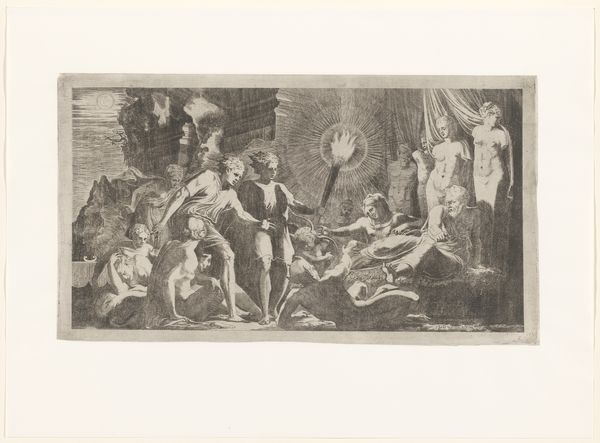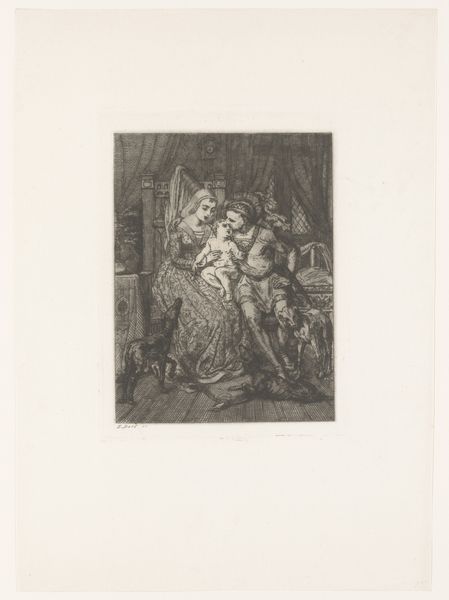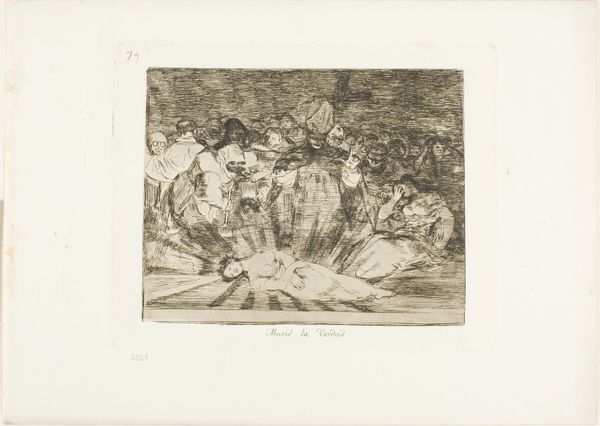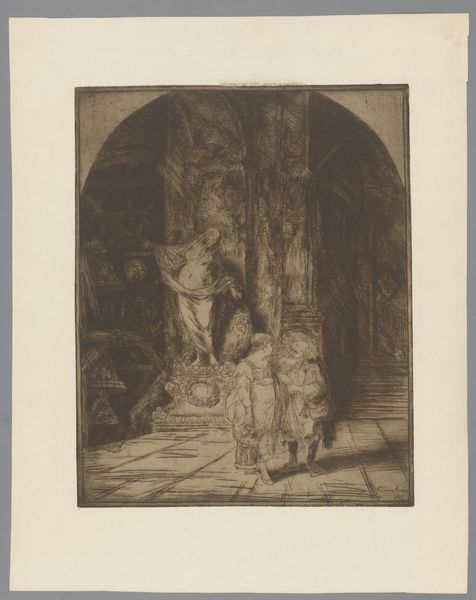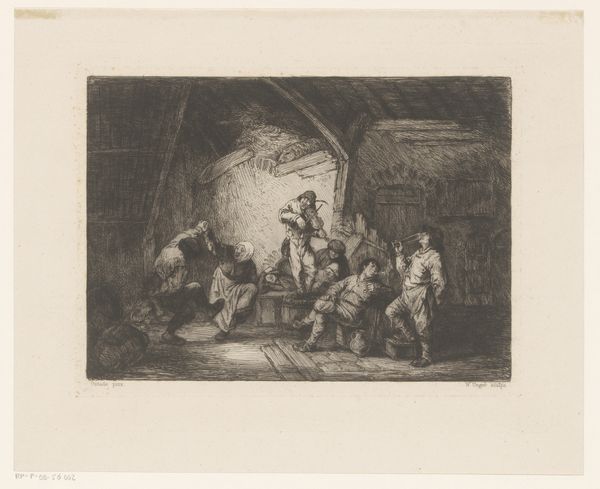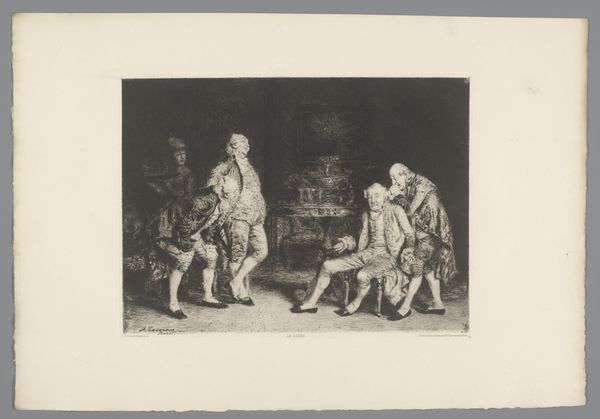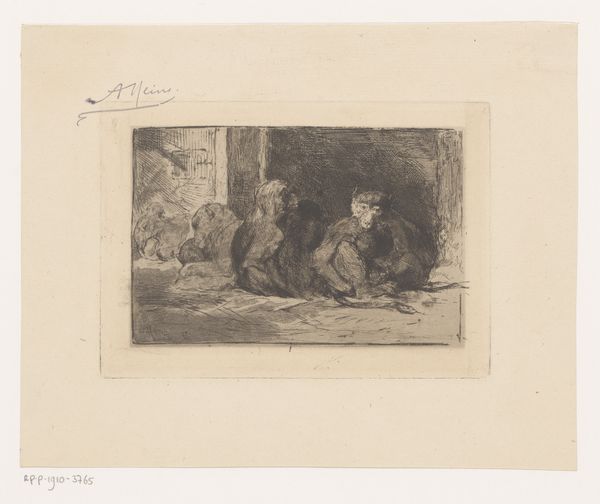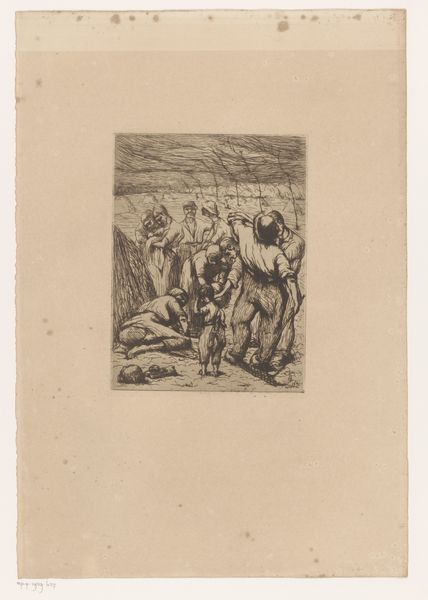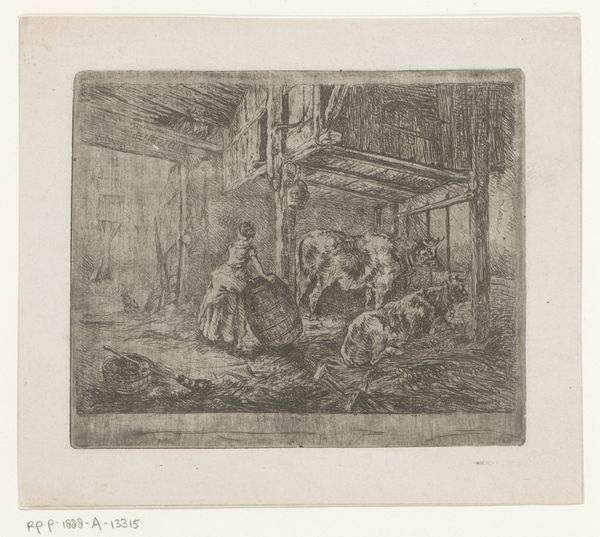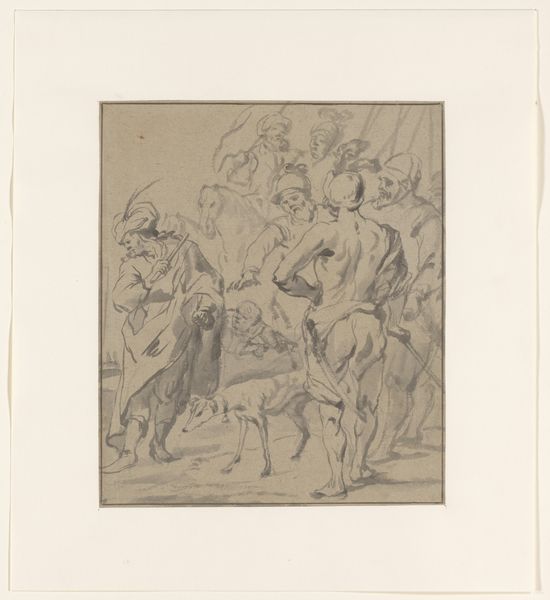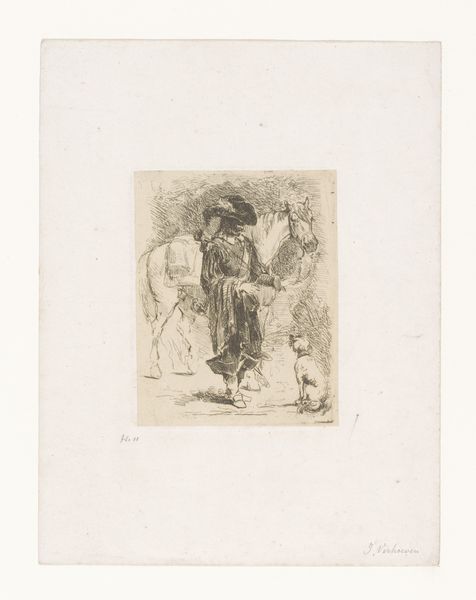
print, etching, engraving
# print
#
etching
#
genre-painting
#
engraving
#
realism
Dimensions: height 174 mm, width 267 mm
Copyright: Rijks Museum: Open Domain
This is an etching, made by Willem Linnig II in the 19th century, depicting a group of beggars. An etching is an image made through a demanding, multistep chemical process. First, a metal plate, often copper, is coated with a waxy, acid-resistant substance. The artist then scratches an image into this coating, exposing the metal beneath. The plate is then immersed in acid, which bites into the exposed lines, creating grooves. The longer the plate sits in the acid, the deeper the lines become. The plate is then inked, and the surface wiped clean, leaving ink only in the etched lines. Finally, the plate is pressed onto paper, transferring the image. Notice how the controlled, precise lines create a sense of depth and texture, particularly in the beggars' tattered clothing. The tonal variations evoke a somber atmosphere, reflecting the social realities of poverty. The labor-intensive process mirrors the hardscrabble existence of the figures depicted. By focusing on the material and the making, we can see how the artistic process itself becomes a commentary on the lives and conditions of the working class.
Comments
No comments
Be the first to comment and join the conversation on the ultimate creative platform.
